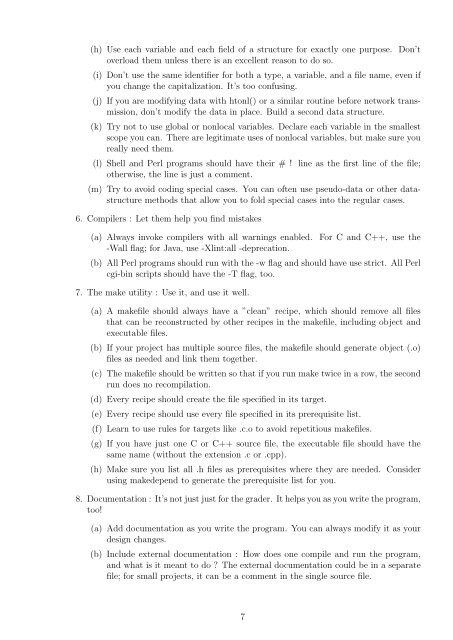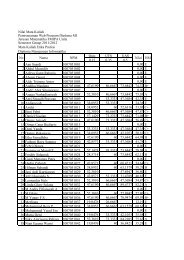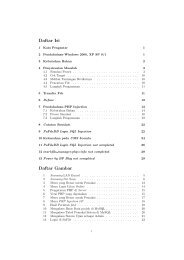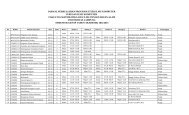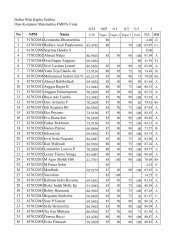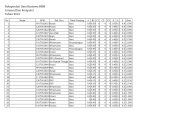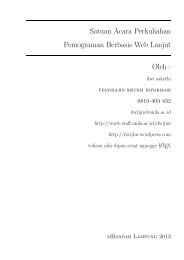Download - Weblog-e Dwi Sakethi
Download - Weblog-e Dwi Sakethi
Download - Weblog-e Dwi Sakethi
- No tags were found...
Create successful ePaper yourself
Turn your PDF publications into a flip-book with our unique Google optimized e-Paper software.
(h) Use each variable and each field of a structure for exactly one purpose. Don’toverload them unless there is an excellent reason to do so.(i) Don’t use the same identifier for both a type, a variable, and a file name, even ifyou change the capitalization. It’s too confusing.(j) If you are modifying data with htonl() or a similar routine before network transmission,don’t modify the data in place. Build a second data structure.(k) Try not to use global or nonlocal variables. Declare each variable in the smallestscope you can. There are legitimate uses of nonlocal variables, but make sure youreally need them.(l) Shell and Perl programs should have their # ! line as the first line of the file;otherwise, the line is just a comment.(m) Try to avoid coding special cases. You can often use pseudo-data or other datastructuremethods that allow you to fold special cases into the regular cases.6. Compilers : Let them help you find mistakes(a) Always invoke compilers with all warnings enabled.-Wall flag; for Java, use -Xlint:all -deprecation.For C and C++, use the(b) All Perl programs should run with the -w flag and should have use strict. All Perlcgi-bin scripts should have the -T flag, too.7. The make utility : Use it, and use it well.(a) A makefile should always have a ”clean” recipe, which should remove all filesthat can be reconstructed by other recipes in the makefile, including object andexecutable files.(b) If your project has multiple source files, the makefile should generate object (.o)files as needed and link them together.(c) The makefile should be written so that if you run make twice in a row, the secondrun does no recompilation.(d) Every recipe should create the file specified in its target.(e) Every recipe should use every file specified in its prerequisite list.(f) Learn to use rules for targets like .c.o to avoid repetitious makefiles.(g) If you have just one C or C++ source file, the executable file should have thesame name (without the extension .c or .cpp).(h) Make sure you list all .h files as prerequisites where they are needed. Considerusing makedepend to generate the prerequisite list for you.8. Documentation : It’s not just just for the grader. It helps you as you write the program,too!(a) Add documentation as you write the program. You can always modify it as yourdesign changes.(b) Include external documentation : How does one compile and run the program,and what is it meant to do ? The external documentation could be in a separatefile; for small projects, it can be a comment in the single source file.7


